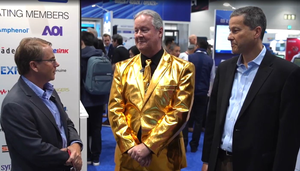
Nex-Tech Wireless, which operates a wireless network in urban and rural parts of Kansas and Colorado, said it plans to turn on 5G services in the third quarter of this year.
Nex-Tech previously hinted at its 5G ambitions late last year by announcing an equipment supply agreement with Ericsson. On Monday, the company detailed its 5G launch timeline.
Nex-Tech said it will use 5G Evolved Packet Core (EPC) and 5G Radio Access Network (RAN) equipment from Ericsson for the launch, as well as the vendor's Dynamic Spectrum Sharing (DSS) technology that will support 5G and 4G transmissions concurrently in the same spectrum band.
"As we make the move to 5G, it is critical that we have a seamless experience," Jon Lightle, president and CEO of Nex-Tech Wireless, said in a release. "Nex-Tech Wireless is excited to work with Ericsson to deliver that experience and to bring 5G capabilities to our customers in Kansas."
Nex-Tech's Aaron Gillespie told Light Reading late last year that the operator would upgrade its 400 cell towers to 5G over several years. He said the operator would deploy 5G first in its 600MHz spectrum and then expand into other spectrum bands, including the millimeter-wave spectrum it won during the FCC's recent 24GHz/28GHz auction.
The development builds on Nex-Tech's announcement last year that it would purchase Ericsson's virtual IMS (IP Multimedia Subsystem) equipment in order to launch Voice over LTE (VoLTE) and Wi-Fi calling.
Nex-Tech's launch date is noteworthy considering much of America – along with the rest of the world – is stuck in the throes of the COVID-19 pandemic. And, because of widespread stay-at-home orders, there are growing indications that network construction efforts may be slowed. Ericsson, however, has been vocal that its operations have remained largely unaffected by the situation.
Rural 5G, organically
Nex-Tech's 5G announcement is also noteworthy because the company is quickly following some of the nation's largest wireless network operators into 5G. T-Mobile, for example, switched on its own lowband 5G service nationwide in its 600MHz spectrum just a few months ago with vendors Nokia and Ericsson. AT&T similarly is launching 5G in its own lowband 850MHz service, with the goal of rolling out the offering nationwide by the middle of this year with vendors Nokia, Ericsson and Samsung.
Further, Nex-Tech is moving into 5G ahead of the US government's efforts to push the technology into rural areas. For example, the FCC is financing a range of efforts designed to cross the "digital divide" in rural areas and connect more Americans to the Internet, including its $20.4 billion Rural Digital Opportunity Fund and its new $9 billion 5G Fund.
However, to be clear, 5G in lowband spectrum isn't much faster than 4G in such spectrum. That's mostly due to the relatively paltry amount of spectrum available to wireless network operators in bands like 600MHz and 850MHz. 5G in midband or highband, millimeter wave (mmWave) spectrum can often perform much faster than current 4G networks, partly because 5G technology is more efficient but also because operators can employ much more overall spectrum in the midband and highband ranges.
— Mike Dano, Editorial Director, 5G & Mobile Strategies, Light Reading | @mikeddano
About the Author(s)
You May Also Like












